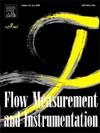Research on a large torque surface-mounted magnetic screw mechanism and its application on 2D flow valve
IF 2.3
3区 工程技术
Q2 ENGINEERING, MECHANICAL
引用次数: 0
Abstract
A novel surface-mounted magnetic screw mechanism (SMMSM) with large output torque and high magnetic energy utilization is proposed. To study the torque-displacement characteristics, the analytical model of SMMSM is derived based on the equivalent magnetic charge theory, virtual displacement method and superposition principle. The influence of the spiral angle of SMMSM, number of magnetic bar, thickness of magnetic bar, and thickness of air gap on the torque are explored, and key structural parameters are selected to design and manufacture the prototype. A static and dynamic experimental platform is built, and the experiment show that the maximum output torque of the SMMSM can reach 1.185 N m at a displacement of 1 mm, and the step response time is 27.5 ms, which are substantially superior to the existing maglev couplings. Finally, the SMMSM is applied to 2D flow valve. The experiments show that the SMMSM-based 2D flow valve has the advantages of large flow rate, high system pressure and fast dynamic response: the maximum flow rate is 167.8 L/min at a system pressure of 25 MPa, the step response time is 16.5 ms, and the amplitude-frequency width is 46.0 Hz, which is also superior to the existing maglev 2D flow valves in terms of these performance indexes. The research indicates the SMMSM-based 2D flow valve can be used as a potential solution for electro-hydraulic servo-proportional valves.
大扭矩表面贴装磁力螺杆机构及其在二维流量阀上的应用研究
提出了一种具有大输出转矩和高磁能利用率的新型表面贴装磁螺杆机构。为了研究SMMSM的转矩-位移特性,基于等效磁荷理论、虚位移法和叠加原理,建立了SMMSM的解析模型。探讨了SMMSM的螺旋角、磁棒数、磁棒厚度、气隙厚度对转矩的影响,选择了关键结构参数进行了样机的设计和制造。搭建了静态和动态实验平台,实验表明,在位移为1 mm时,SMMSM的最大输出转矩可达1.185 N m,阶跃响应时间为27.5 ms,大大优于现有的磁悬浮联轴器。最后,将SMMSM应用于二维流量阀。实验表明,基于smmsm的2D流量阀具有流量大、系统压力高、动态响应快等优点,在系统压力为25 MPa时,最大流量为167.8 L/min,阶跃响应时间为16.5 ms,幅频宽为46.0 Hz,上述性能指标均优于现有的磁悬浮2D流量阀。研究表明,基于smmsm的二维流量阀可以作为电液伺服比例阀的一种潜在解决方案。
本文章由计算机程序翻译,如有差异,请以英文原文为准。
求助全文
约1分钟内获得全文
求助全文
来源期刊

Flow Measurement and Instrumentation
工程技术-工程:机械
CiteScore
4.30
自引率
13.60%
发文量
123
审稿时长
6 months
期刊介绍:
Flow Measurement and Instrumentation is dedicated to disseminating the latest research results on all aspects of flow measurement, in both closed conduits and open channels. The design of flow measurement systems involves a wide variety of multidisciplinary activities including modelling the flow sensor, the fluid flow and the sensor/fluid interactions through the use of computation techniques; the development of advanced transducer systems and their associated signal processing and the laboratory and field assessment of the overall system under ideal and disturbed conditions.
FMI is the essential forum for critical information exchange, and contributions are particularly encouraged in the following areas of interest:
Modelling: the application of mathematical and computational modelling to the interaction of fluid dynamics with flowmeters, including flowmeter behaviour, improved flowmeter design and installation problems. Application of CAD/CAE techniques to flowmeter modelling are eligible.
Design and development: the detailed design of the flowmeter head and/or signal processing aspects of novel flowmeters. Emphasis is given to papers identifying new sensor configurations, multisensor flow measurement systems, non-intrusive flow metering techniques and the application of microelectronic techniques in smart or intelligent systems.
Calibration techniques: including descriptions of new or existing calibration facilities and techniques, calibration data from different flowmeter types, and calibration intercomparison data from different laboratories.
Installation effect data: dealing with the effects of non-ideal flow conditions on flowmeters. Papers combining a theoretical understanding of flowmeter behaviour with experimental work are particularly welcome.
 求助内容:
求助内容: 应助结果提醒方式:
应助结果提醒方式:


